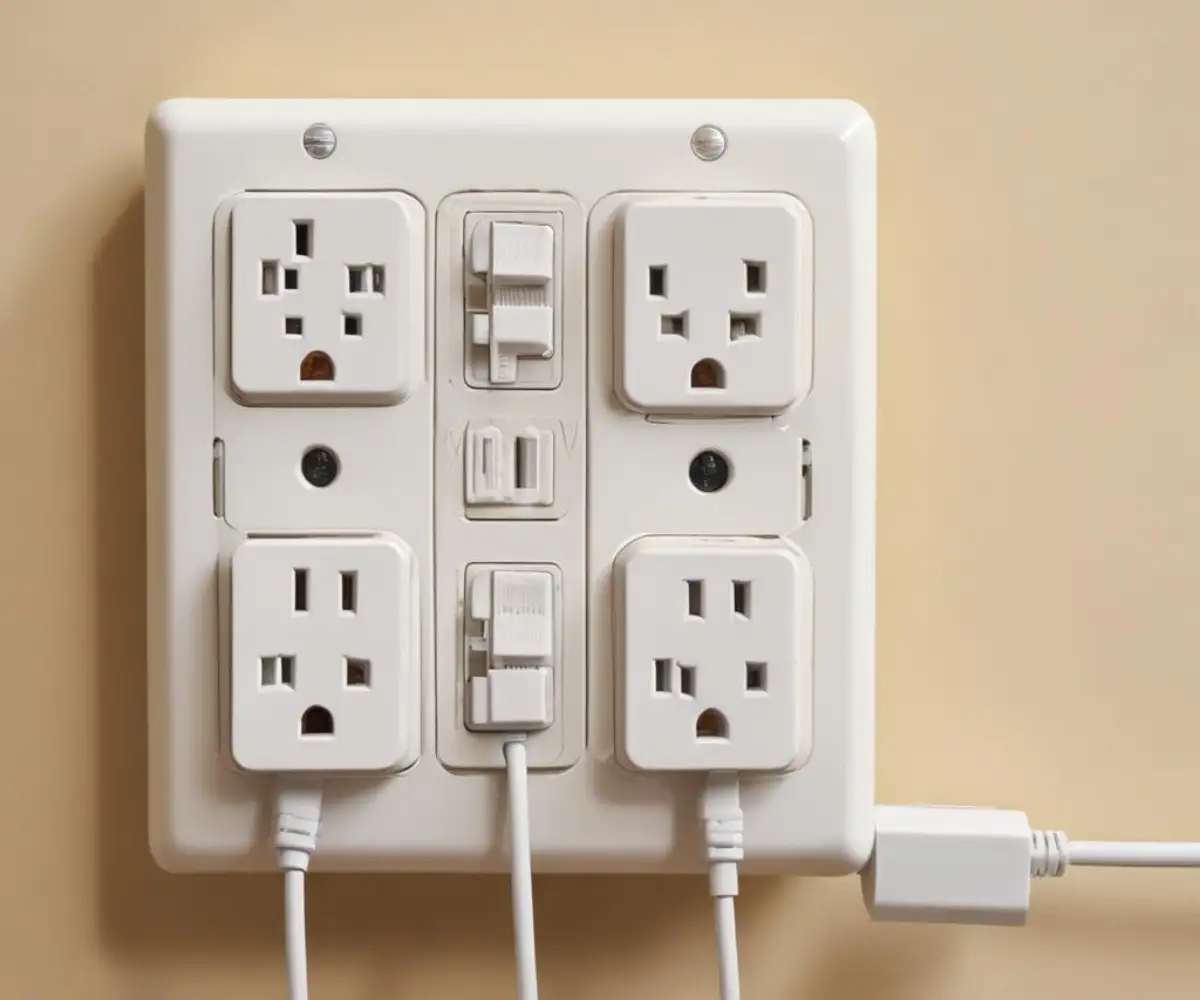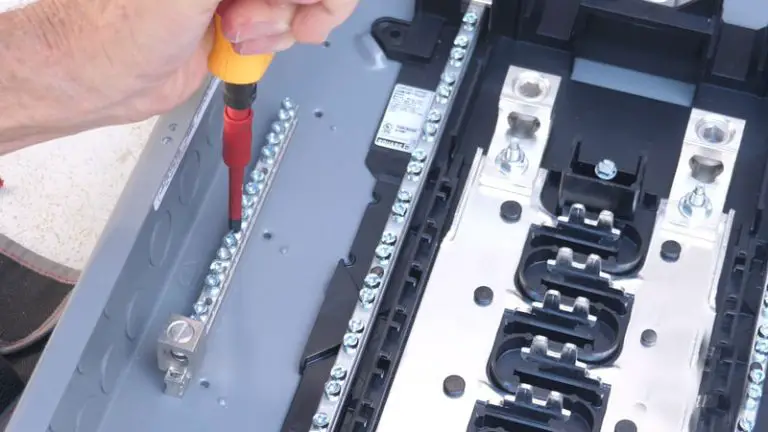Surge Protector on Ungrounded Outlet? Here’s the Brutal Truth
You’ve invested hundreds, maybe thousands, of dollars in your home electronics. You have a powerful computer, a new television, and a sound system you love. Naturally, you want to protect them, so you buy a surge protector. But there’s a problem: you live in an older home, and your wall outlets only have two prongs, not three. You’ve heard you shouldn’t use a surge protector on an ungrounded outlet, but is it really that big of a deal? The shocking answer is yes.
Placing a standard surge protector on an ungrounded outlet is not just ineffective; it’s a dangerous gamble with your valuable electronics and your home’s safety. This common mistake provides a false sense of security while offering absolutely zero protection against the very power surges you’re trying to prevent. It essentially turns your surge protector into a simple, overpriced power strip with no safety features.
You'll Learn About
How Surge Protectors *Actually* Work (And Why Ground is Crucial)
To understand the danger, you first need to understand how a typical surge protector functions. The key component inside most surge protectors is a device called a Metal Oxide Varistor (MOV). The MOV’s job is to act like a pressure-sensitive valve for electricity.
Under normal voltage conditions (around 120 volts in the U.S.), the MOV does nothing. When a power surge occurs—a sudden spike in voltage caused by lightning, downed power lines, or even large appliances cycling on and off—the MOV instantly springs into action. It diverts all that excess, damaging voltage away from your sensitive electronics and sends it safely into the ground through the third prong on the plug—the ground wire. Without a connection to the ground, the MOV has nowhere to send the surge. The excess voltage has no escape route and will flow right through to your plugged-in devices, potentially frying their delicate internal components.
The Deception of “Cheater” Adapters
Many people attempt a workaround using a three-to-two-prong adapter, often called a “cheater plug.” These adapters allow a three-prong plug to fit into a two-prong outlet. Some even have a small metal ring or wire that is supposed to be screwed into the faceplate screw, with the idea that the electrical box itself might be grounded.
However, this is a dangerous assumption, especially in older homes where the electrical boxes are often not grounded. Using one of these adapters does not create a ground connection. It simply bypasses the most critical safety feature of the surge protector, leaving your devices completely vulnerable and creating a potential fire hazard.

The Real Risks: More Than Just Fried Electronics
Using a surge protector without a ground isn’t just a waste of money; it’s actively hazardous. When a power surge hits an ungrounded surge protector, the energy has nowhere to go. This can lead to several catastrophic outcomes.
First, the surge will almost certainly destroy the electronics you were trying to protect. This damage can happen in an instant, leaving you with expensive paperweights. Second, the surge protector itself can be overwhelmed, leading to overheating, melting, or even an electrical fire. Ignoring proper electrical safety can be as disastrous as neglecting structural maintenance that could lead to a roof caved in from rain.
Your Safest Options: Real Solutions for Ungrounded Outlets
If you have ungrounded outlets, you are right to be concerned about protecting your electronics. The good news is that you have several safe and effective solutions. The bad news is that using a standard surge protector isn’t one of them.
1. The Gold Standard: Hire an Electrician to Ground Your Outlets
The best and most comprehensive solution is to hire a qualified electrician to rewire the outlets and establish a proper ground. This involves running a new ground wire from your electrical panel to the outlets. While this is the most expensive option, it is a permanent fix that brings your home up to modern safety standards and allows all your three-prong devices and surge protectors to function as designed.
Think of it as an investment in your home’s infrastructure and safety. Just as you would insist on using the best crack isolation membrane to prevent unseen cracks from damaging your floors, proper grounding prevents invisible electrical surges from destroying your electronics.
2. A Good Compromise: Install GFCI Outlets
A Ground Fault Circuit Interrupter (GFCI) outlet is a crucial safety device, but it’s important to understand what it does and doesn’t do. A GFCI’s primary job is to protect people from electric shock. It constantly monitors the flow of electricity in a circuit, and if it detects a tiny imbalance—meaning electricity is flowing somewhere it shouldn’t, like through a person—it shuts off the power in a fraction of a second.
According to the National Electric Code, installing a GFCI is a permissible way to replace an ungrounded two-prong outlet. It provides excellent shock protection. However, a GFCI does not provide an equipment ground and will not help a standard MOV-based surge protector divert a power surge. It protects you, but not necessarily your devices from voltage spikes.
3. A Specialized Alternative: Series Mode Surge Suppressors
For situations where rewiring isn’t immediately possible, there is a special type of surge protector that does not rely on a ground connection to work. These are called Series Mode (or filter-based) surge suppressors. Instead of diverting or shunting surge energy to the ground wire like an MOV, they work by slowing down, absorbing, and filtering the surge energy before it reaches your devices.
These devices are more expensive than standard surge protectors but are a genuinely effective and safe solution for ungrounded environments. They provide robust protection for your electronics without needing a third wire.
Comparing Your Protection Options
Understanding the differences between these solutions is critical for making an informed decision. Each offers a different level of protection at a different cost.
| Solution | Primary Protection Type | Effectiveness for Surge Protection | Typical Cost |
|---|---|---|---|
| Standard Surge Protector (on ungrounded outlet) | None | Zero. Creates a fire risk. | Low (for the device) |
| GFCI Outlet | Personal Shock Protection | Very Low / None | Moderate (per outlet) |
| Series Mode Suppressor | Equipment Surge Protection | Very High (works without ground) | High (for the device) |
| Electrician-Installed Grounded Outlet | Personal Shock & Equipment Surge Protection | Highest (Enables all standard devices) | High (for the wiring job) |
The Final Verdict: Don’t Gamble with Your Gear
The temptation to use a simple adapter with your surge protector on an ungrounded outlet is understandable, but it’s a dangerous misconception. You are not protecting your equipment; you are exposing it to damage and creating a potential fire hazard. True homeownership involves understanding and maintaining all of your home’s systems, from basic electrical wiring to routine tasks like fireplace gas valve cover plate removal.
Stop using standard surge protectors on ungrounded outlets immediately. Your best long-term solution is to invest in having your outlets professionally grounded. If that isn’t feasible right now, purchase a Series Mode surge suppressor specifically designed for ungrounded applications. Your expensive electronics and your peace of mind are worth the investment in doing it the right way.
Frequently Asked Questions
Do surge protectors work on ungrounded outlets?
Standard surge protectors that use Metal Oxide Varistors (MOVs) are not effective on ungrounded outlets. These devices work by diverting excess voltage to the ground wire, so without a ground connection, they cannot perform their primary protective function.
What are the risks of using a regular surge protector with an ungrounded outlet?
Using a standard surge protector in an ungrounded outlet can create a false sense of security and may even pose a safety hazard. Without a path to ground, the excess energy can be redirected to the neutral line or create its own path, potentially damaging connected devices and creating a fire risk.
Will an ungrounded surge protector offer any protection at all?
A standard surge protector on an ungrounded outlet may offer minimal protection against voltage surges between the hot and neutral wires. However, it will not protect against more common and damaging surges, especially those from lightning, that require a ground connection to be safely dissipated.
Are there special surge protectors for ungrounded outlets?
Yes, series mode surge protectors are designed to work differently than standard MOV-based protectors and are effective for ungrounded outlets. They filter and store excess energy rather than diverting it to the ground, making them a safer option for older homes without grounded wiring.
Besides a special surge protector, what are my options for ungrounded outlets?
The safest and most comprehensive solution is to have a licensed electrician upgrade your home’s wiring to include a proper ground. Another option is to have Ground Fault Circuit Interrupter (GFCI) outlets installed, which can protect against electric shock but must be labeled as ungrounded.
Can I just use a three-prong to two-prong adapter with my surge protector?
No, using a three-prong to two-prong adapter does not create a ground connection. It simply allows the plug to fit into the outlet, but the surge protector will remain ungrounded and will not be able to offer proper protection.

